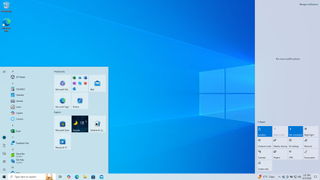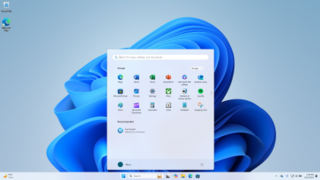
Windows RT is a mobile operating system developed by Microsoft and released alongside Windows 8 on October 26, 2012. It is a version of Windows 8 or Windows 8.1 built for the 32-bit ARM architecture (ARMv7), designed to take advantage of the architecture's power efficiency to allow for longer battery life, to use system-on-chip (SoC) designs to allow for thinner devices and to provide a "reliable" experience over time. Unlike Windows 8, Windows RT was only available as preloaded software on devices specifically designed for the operating system by original equipment manufacturers (OEMs); Microsoft launched its own hardware running it, the Surface tablet, which was followed by Surface 2, although only five models running Windows RT were released by third-party OEMs throughout its lifetime.

Microsoft Surface is a family of touchscreen-based personal computer, tablet, and interactive whiteboard hardware products designed and developed by Microsoft. The majority of them run the Windows operating system and use Intel processors.

The Surface Pro 2 is a Surface-series 2-in-1 detachable produced by Microsoft. Unveiled at an event in New York City on September 23, 2013 and released on October 22, 2013, it succeeds the Surface Pro released in February 2013. While maintaining a design similar to the original design of its predecessor, the Surface Pro 2 has improved hardware specifications compared to it, such as a Haswell Intel Core processor and an increased number of storage options, improved versions of the kickstand and cover accessories.
Surface Mini is an unreleased tablet computer that Microsoft designed as the successor to the Surface 2 in the Microsoft Surface family. The device has a Qualcomm Snapdragon 800 processor and a 7.5-inch (19 cm) 4:3 aspect ratio touchscreen display that defaults to portrait mode. Like its predecessor, the Surface Mini runs Windows RT 8.1, a mobile operating system that was designed for the ARM architecture and has limitations including an inability to install Win32 applications; programs can only be installed from the Windows Store.

Surface 3 is a 2-in-1 detachable from the Microsoft Surface series, introduced by Microsoft in 2015. Unlike its predecessor, the Surface 2, Surface 3 utilizes an x86 Intel Atom system-on-chip architecture, or SoC, rather than a processor with ARM architecture such as the Nvidia Tegra that powered the Surface 2, and runs standard versions of Windows 8.1 or Windows 10.

Windows 10 is a major release of Microsoft's Windows NT operating system. The successor to Windows 8.1, it was released to manufacturing on July 15, 2015, and later to retail on July 29, 2015. Windows 10 was made available for download via MSDN and TechNet, as a free upgrade for retail copies of Windows 8 and Windows 8.1 users via the Microsoft Store, and to Windows 7 users via Windows Update. Unlike previous Windows NT releases, Windows 10 receives new builds on an ongoing basis, which are available at no additional cost to users; devices in enterprise environments can alternatively use long-term support milestones that only receive critical updates, such as security patches.
Windows 10 has several editions, all with varying feature sets, use cases, or intended devices. Certain editions are distributed only on devices directly from an original equipment manufacturer (OEM), while editions such as Enterprise and Education are only available through volume licensing channels. Microsoft also makes editions of Windows 10 available to device manufacturers for use on specific classes of devices, including IoT devices, and previously marketed Windows 10 Mobile for smartphones.
The Surface Laptop 2 is a Surface-series laptop produced by Microsoft. Unveiled at an event in New York City on 2 October 2018, and alongside the Surface Pro 6 released on 16 October 2018, it succeeds the Surface Laptop, released in June 2017. While maintaining a design similar to the original design of its predecessor, the Surface Laptop 2 has improved hardware specifications compared to it, an increased number of storage options and a new matte black color.
The Surface Laptop 3 is a laptop computer developed by Microsoft. It is the third generation of Surface Laptop and was unveiled alongside the Surface Pro 7 and Surface Pro X on an event on 2 October 2019. It succeeds the Surface Laptop 2 that was released in October 2018.
The Surface Pro 7 is a 2-in-1 detachable tablet computer developed by Microsoft. It is the seventh generation of Surface Pro and was announced alongside the Surface Laptop 3 and Surface Pro X at an event on 2 October 2019. An updated version of the device was introduced on 11 January 2021 called the Surface Pro 7+. Surface Pro 7 and 7+ maintain the same form and design as previous models but with the Mini DisplayPort receptacle replaced by a USB-C port. The display of the device is the same as the previous model with a 2736 x 1824 resolution touchscreen in 3:2 aspect ratio and 267 ppi. The Surface Pro 7 starts at $750 and goes up to $2,300. The Surface Pro 7+ for Business starts at $900 and goes up to $2,800.
The Surface Go 2 is a 2-in-1 detachable tablet computer developed by Microsoft. It is the second generation of Surface Go and was announced alongside the Surface Book 3 on May 6, 2020 online. It was available for purchase starting May 12, 2020. In October 2021, this has been superseded by the Surface Go 3.
The Surface Laptop 4 is a laptop computer made by Microsoft. It is the fourth generation of Surface Laptop which launched on 13 April 2021. It succeeds the Surface Laptop 3, which was released in 2019.

Windows 11 is the latest major release of Microsoft's Windows NT operating system, released on October 5, 2021. It succeeded Windows 10 (2015), and is available for free for any Windows 10 devices that meet the new Windows 11 system requirements.

The Surface Go 3 is the third generation model of the Surface Go series of devices, introduced as the successor to the Surface Go 2 by Microsoft at their Surface Event on September 22, 2021. It was announced by the company alongside the Surface Laptop Studio, Surface Pro 8, Surface Duo 2 and many Surface accessories. The tablet has the same body, the same set of cameras and speakers, the same ports, and the same dimensions as its predecessor; the main enhancement is a range of more powerful processors. The tablet is powered by the Windows 11 operating system.
The Microsoft Surface Pro 8 is a 2-in-1 detachable tablet computer developed by Microsoft to supersede the Surface Pro 7. It combines the form factor and exterior design of the Surface Pro X with internal Intel-based hardware of the Pro 7+. It was announced on September 22, 2021 alongside the Surface Go 3, updated Surface Pro X models, a new Surface Laptop Studio, Surface Duo 2, Surface Slim Pen 2, and several other accessories. The tablet is powered by the new Windows 11 operating system.
The Surface Laptop Studio is a 2-in-1 convertible laptop developed by Microsoft. It was announced by the company alongside the Surface Go 3 and Surface Pro 8, Surface Duo 2 and several Surface accessories at their Surface Event on September 22, 2021. The device is a new form factor featuring a dual-pivoting screen that flips into tablet mode. The laptop shipped with Windows 11.

The Microsoft Surface Pro 9 is a 2-in-1 detachable tablet computer developed by Microsoft to supersede the Surface Pro 8 and Surface Pro X, merging both brands. The device was announced on October 12, 2022 introducing two new colors and alongside the Surface Laptop 5 and Surface Studio 2+. The tablet is powered by the new Windows 11 operating system, and features 12th generation Intel Core processors or the ARM-based Microsoft SQ3 processor on 5G models.
The Microsoft Surface Laptop 5 is a laptop computer developed by Microsoft to replace the outgoing Surface Laptop 4. The device was announced on October 12, 2022, alongside the Surface Pro 9 and Surface Studio 2+. Key differences from its predecessor include newer Intel Alder Lake processors, support for Thunderbolt 4, the removal of AMD configuration options, and the replacement of the Ice Blue fabric finish option with the Sage metal option. The laptop comes preinstalled with the Windows 11 operating system.

The Surface Pro is a 2-in-1 detachable tablet computer developed by Microsoft to supersede the Surface Pro 10 and Surface Pro X. It was released shortly after the Intel x86-based Surface Pro 10, and unveiled alongside the Surface Laptop. The Surface Pro 11 introduces the Qualcomm Snapdragon X series CPUs to the Surface Pro model line, and therefore runs Windows on ARM. It is also the first Surface device with a built-in NPU designed for generative AI, via Microsoft Copilot+

The Surface Laptop is a laptop computer developed by Microsoft. It is the seventh generation of Surface Laptop, and was unveiled alongside the Surface Pro. It is the first Surface Laptop released for Windows on ARM. It is also the first Surface Laptop with a built-in NPU designed for generative AI, via Microsoft Copilot+











